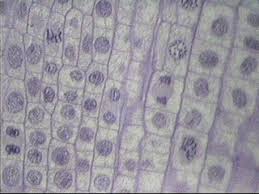In class, we did two virtual lab activities, that were supposed to broaden our knowledge od cell division, as well as nuclear division. From the first lab, there are quite a few things that I learned, but also a few things that surprised me. I learned all parts of the cellular devision cycle, and I was quite surprised that there are so many. The first part of the cell division is interphase. That is when the chromosomes, as well as the DNA, duplicate themselves within one cell. The next stage is the prophase. In the prophase, the chromosomes start becoming visible under the microscope, and they also begin moving. In the metaphase, the chromosomes all allign at the center of the nucleus, preparing for the next stage. Finally, in anaphase, the chromosomes move to the opposite poles of the cell. The last stage is telophase, when new membrane starts being created around the daughter nucleii, preparing for cell division. Even though there are so many stages of this cycle, most of the time the cell takes to duplicate is spent on the interphase (about 80-90%). In the second lab activity, I have learned to tell apart the nucleus of a dividing and non-dividing cells. I noticed that when the cell is not dividing, the nucleus is pure black, possibly being in interphase. However, in a dividing cell the chromosomes are visible on the onion tip root. The reason the tip of the onion root is used for these types of experiments is because the roots of plants are constantly growing, searching for nutrients in the soil. Thus, cell division is constantly taking place in those parts of the plant. What I really likes about the second lab was the fact that it allowed us as students to be scientists, and determine in what division stage the different cells are. Another thing that I found really interesting was the fact that there are some slight differences between the division of animal and plant cells. I did a little research, and found that there are two major differences between the cell division in animals and plants. Animal cells have centrioles, that help the chromosomes move to the opposite poles. Plants, on the other hand, do not have them. Another difference can be spotted during telephase. A plant cell creates a cell plate, which later turns into a cell wall. However, since animal cells do not have a cell wall, it doesn't create that cell plate.
Finally, there is one simple difference between mitosis and meiosis. During mitosis, the cell undergoes a simple division in two, where both of the daughter cells get exactly half of the original chromosomes created during interphase. However, meiosis is a cell division between sex cells. During this process, four daughter cells are created, since there are two nuclear divisions.


Finally, there is one simple difference between mitosis and meiosis. During mitosis, the cell undergoes a simple division in two, where both of the daughter cells get exactly half of the original chromosomes created during interphase. However, meiosis is a cell division between sex cells. During this process, four daughter cells are created, since there are two nuclear divisions.

Excellent explanations and images used in your blog post. I especially like the mitosis images. You were exactly right about the differences between plant and animal cell mitosis. Great work!
ReplyDelete